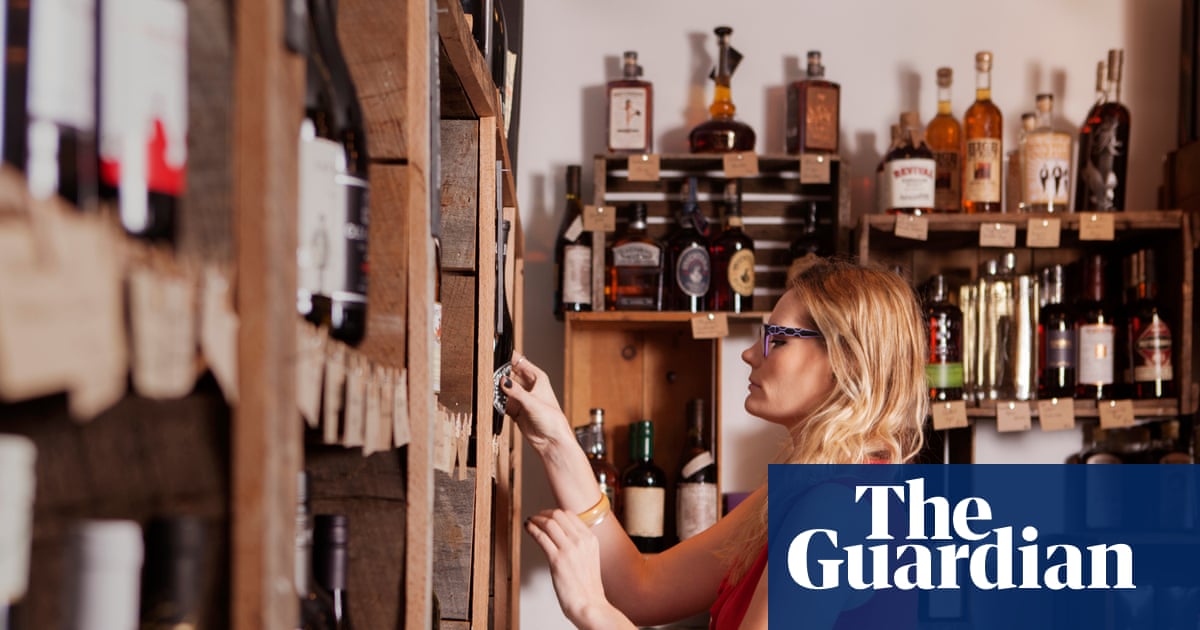While their parents might have paired a bold cabernet with a hearty steak dinner, Gen Z has been dubbed the “sober curious” generation. More than half of young US consumers claimed in one survey that they hadn’t touched alcohol in six months.
But they’re not turning away from wine, industry leaders insist: just drinking it differently.
The focus is on less strength, and more flavor, according to Lily Taggart, 21, a New York City chef. “It’s hard to forge connections if you’re drinking high [alcohol by volume] ABV and can’t remember conversations the next day.”
“Gen Z is taking the pretentiousness of wine away and it’s all about intentionality over status,” she said. “There is this European shift of sipping a drink, bonding with friends and wanting more authentic connections.”
According to research by IWSR, a drinks industry data provider, Gen Z is gravitating toward sustainable, natural wines and embracing innovative styles like chilled reds and orange wines. They want bottles that are fun, more sessionable and easier to enjoy in social settings.
“This young consumer doesn’t want to get hammered,” said Steve Riboli, president and CEO of the Stella Rosa wine label. “They want to be able to socialize for five hours.”
Stella Rosa’s lineup spans from black cherry and strawberry to more adventurous flavors like pineapple chili and watermelon chili.
When the label noticed Gen Z’s predilection towards cocktails, Riboli explained, it launched Spritz Del Conte: a ready-made Aperitif cocktail label.
Much of the traditional wine industry seems out-of-reach and too “elitist” for this generation, Taggart said. “The whole white tablecloth [culture] of wine is really expensive, and the language feels really inaccessible,” she said. “If you can describe flavors you’re interested in food, I think you can describe flavors you’re interested in wine. But I still think people are scared to.”
The Brooklyn wine bar Sauced has become a Gen Z favorite, with a rustic lowkey vibe, natural wines and nonalcoholic offerings – and no need to know the difference between tannins and terroir. With no menu, patrons simply tell the waiters the vibe or tastes they would like, and receive a personalized recommendation.
“You don’t need to speak the language of wine to go to Sauced,” said Mira Hobbs, 26, founder of On Cloud Wine, a New York–based wine social club. “It makes wine feel fun and intuitive, not intimidating.”
Wine clubs like On Cloud, Chardonngay and Wine for Me are cropping up across the city, geared around this younger wine culture. Their common goal: making wine approachable, fun and social.
Kristin Olszewski, founder of wine label Nomadica, noticed Gen Z’s different habits when she was a sommelier at Michelin-starred restaurants. “Young consumers would come in the restaurant and drink so much orange wine and chilled red, and I asked them why,” she said.
“The answer was always ‘I don’t need to know anything about orange wine to enjoy it’,” Olszewski added. “The grape riddles between different reds and different whites are confusing so orange wine feels less pretentious, but still high quality and fun.”
Nomadica specializes in canned and boxed wine. Its range – which includes the classics, along with an orange wine and a Rose Yuzu spritz – is zero-sugar and low calorie. A QR code on the packaging brings consumers to a playlist curated to set a complementary mood.
“I wanted to invite the [consumer] into the wine world,” Olszewski said. “A major misconception is that Gen Z and younger millennials don’t care, but they actually care so much and they’re so interested to learn more. They just don’t want to be talked down to.”
Nomadica has branched out into different spaces to reach younger consumers, engaging Gen Z on social media, at music festivals and organic markets like Whole Foods.
Price point is also important, according to Olszewski “It’s all about making wine more accessible and a ‘good-for-you’ wine that fits in this generation’s health conscious mindset,” she said.
Take Hoxie Spritzer: a low ABV, no added sugar, sustainable wine-based beverage. Josh Rosenstein, its founder, wanted to create a spritz that consumers found “easy to drink while being social, and still being able to go on a run the next morning”.
Hoxie has tried to develop intriguing flavors, mixing a familiar taste like grapefruit and a unique ingredient like elderflower. Gen Z wants “an experience,” suggested Rosenstein. “By drinking Hoxie with your friends, I want you to feel like you’ve gone on vacation in St Tropez or by a lakeside in upstate New York.”
Times are changing, according to Rosenstein and Olszewski, who say the traditional wine industry needs to adapt to the tastes and values of this new era of wine drinkers, rather than cling to the established wine culture.
For Taggart, Gen Z is redefining what a wine drinker is. “Before I thought a wine drinker would be like my grandma [with a] dark red. It felt like you had to be either old or really rich to enjoy,” she said. “Now, I think of someone young and hip, like [someone who] lives in Brooklyn and has patchwork tattoos.”

